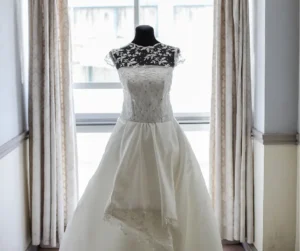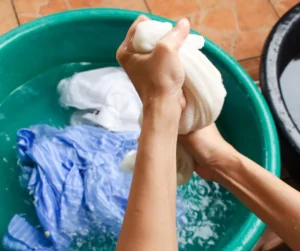Your wedding gown is more than just a dress; it’s a treasured symbol of one of the most significant days of your life. To ensure that it remains in pristine condition for years to come, proper cleaning and preservation are essential. Here’s a guide on the do’s and don’ts of wedding gown cleaning and preservation.

Do’s
Do Act Quickly: After your wedding, try to clean your gown as soon as possible. Stains from food, makeup, or dirt can become set over time, making them harder to remove. Aim to take your dress to a professional cleaner within a few days of your wedding.
Do Choose a Professional: Opt for a dry cleaner who specializes in wedding gowns. They have the expertise and equipment necessary to handle delicate fabrics and embellishments. Seek recommendations or check reviews to identify a trustworthy service.
Do Check for Stains: Before handing over your gown, inspect it for any visible stains. Be sure to point these out to your cleaner, as they may require special treatment. Even seemingly minor stains can become problematic if not addressed promptly.
Do Store Properly: After cleaning, store your gown in a breathable garment bag made of cotton or muslin. Avoid plastic bags, as they can trap moisture and lead to mold or yellowing. Store your gown in a cool, dry location, away from direct sunlight.
Do Consider Preservation: If you plan to keep your gown for years, consider professional preservation services. This usually involves cleaning, packaging in an acid-free box, and ensuring the gown is stored in optimal conditions to prevent damage.
Don’ts
Don’t DIY Clean: Avoid attempting to clean your gown at home. Many wedding gowns are made from delicate materials and may have intricate detailing. Home cleaning methods can cause damage, fading, or shrinkage.
Don’t Ignore the Care Label: Pay attention to the care label on your gown. It provides essential information about the fabric and cleaning methods recommended by the manufacturer. Following these guidelines can help preserve the integrity of your dress.
Don’t Use Harsh Chemicals: If you notice stains, don’t use household cleaning products or harsh chemicals to treat them. These can react negatively with the fabric and cause discoloration or damage. Always consult a professional for stain removal.
Don’t Fold Your Gown: When storing your gown, avoid folding it. Creases can set into the fabric and be difficult to remove later. Instead, hang it properly in a cool, dry location, or store it flat in a preservation box.
Don’t Forget to Check Periodically: After storing your gown, check on it every few years. Look for any signs of deterioration or staining, and consult a professional if needed. Regular assessments can help spot potential issues before they develop into significant problems.
Conclusion
Proper cleaning and preservation of your wedding gown will ensure it remains a beautiful keepsake for years to come. By following these do’s and don’ts, you can protect your cherished dress and preserve the memories it represents. Whether you decide to wear it again or pass it down to future generations, your wedding gown deserves the best care possible.
Ready to ensure your gown gets the expert care it deserves? Contact a professional wedding gown dry cleaner today and preserve your memories for a lifetime!




